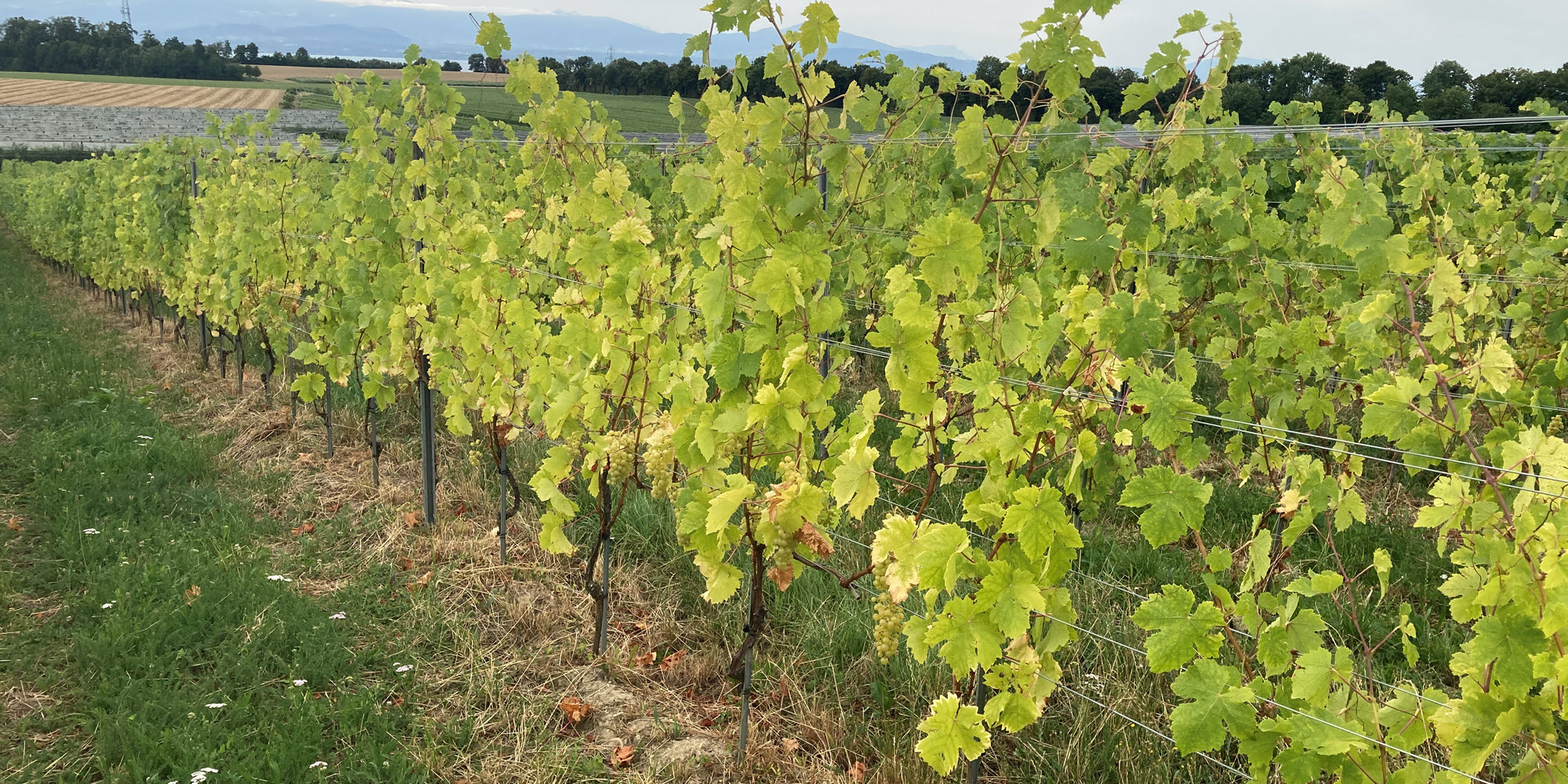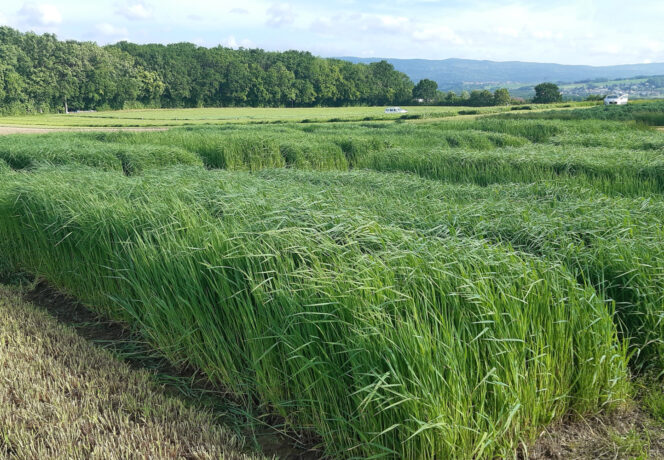Evaluation of Vine-to-Cellar Chasselas Nitrogen Nutrition in the Canton of Vaud
Photo: Thibaut Verdenal,
Agroscope
A survey conducted in the Canton of Vaud on Chasselas reveals frequent nitrogen deficiencies in the vineyard for the 2022-2023 vintage, despite the application of soil supplements. Only a third of those surveyed measure yeast-assimilable nitrogen (YAN) in the must.
In viticulture, vine nitrogen nutrition management makes a crucial contribution to the elaboration of quality grapes and wines. As part of this study, a questionnaire was submitted to winemakers in the Canton of Vaud to gather information on nitrogen nutrition management for the 2022, 2023 and 2024 vintages of the Chasselas grape variety both on the vine and in the cellar.
Nitrogen deficiency symptoms in specific vintages
Nitrogen deficiency symptoms in Chasselas were observed by 56% of survey participants in 2022 and by 50% in 2023 – vintages marked by unusually high sunshine levels and summer temperatures. By contrast, these symptoms were not observed in 2024, a year characterised by numerous rainy episodes (Figure 1).

Soil application is the most widespread approach to nitrogen fertilisation
Concernant la fertilisation azotée au vignoble, les pourcentages varient peu d’un millésime à l’autre. De manière générale, la fertilisation azotée au sol est la pratique la plus répandue chez les vignerons du canton de Vaud (avec des pourcentages compris entre 55 % et 60 % selon les millésimes), tandis que l’apport foliaire est très peu pratiqué. Une tendance similaire a été observée en Regarding nitrogen fertilisation in the vineyard, percentages vary little from one vintage to another. In general, soil application of nitrogen fertiliser is the most widespread practice among winemakers in the Canton of Vaud (with percentages ranging between 55% and 60% according to vintage), whilst foliar application is highly uncommon. A similar trend was observed in Valais, where a survey conducted on the 2022 vintage revealed that 89% of the respondents had not applied foliar nitrogen to the Chasselas grape variety in the vineyard. Nevertheless, foliar fertilisation remains an important practice in viticulture, as it optimises nutrient assimilation to prevent nitrogen deficiencies in grapes without impacting vine vigour. A yeast-assimilable nitrogen (YAN) concentration below 140 mg/L equates to a moderate deficiency situation for the vinification of white-wine musts.
Slowdown at end of alcoholic fermentation and variability of yeasts used
In the cellar, 27% of respondents measured YAN in the Chasselas must in 2022, followed by 33% in 2023 and 2024 (Figure 2A), with YAN values ranging between 62 and 182 mg/L. The majority of producers did not observe a significant slowdown of alcoholic fermentation (AF) (Figure 2B). Nevertheless, some producers reported sluggish or even stuck fermentation at the end of AF, with vats encountering difficulties in finishing the fermentation process. These slowdowns are most likely associated with the presence of residual sugars left by the active dry yeasts (ADY’s) used, which turned out to be a total of 32 different yeast strains. In their choice of yeasts, several participants expressed a preference for low nitrogen requirement (LNR) ADY’s over high nitrogen requirement (HNR) ADY’s. A survey of the yeasts used by producers is underway to evaluate their fermentation efficiency at different levels of assimilable nitrogen. The aim is to create factsheets to propose a microbiological tool that could be used as an alternative to oenological inputs during nitrogen-deficient vintages.
Lastly, temperature control is a practice employed by 42% of respondents to resolve these slowdowns. Ninety-four percent of cellars have a temperature control system. Other practices used are aeration (39%) and the addition of lees or nutrients (19%).

Conclusions
- Nitrogen deficiency symptoms in the vineyard are a function of the vintage and appear more frequently during hot, dry years. Furthermore, nitrogen deficiency in Chasselas must is very common.
- Soil application of nitrogen fertiliser is a common practice among winemakers in the Canton of Vaud, whilst foliar application is highly unusual.
- Measuring yeast-assimilable nitrogen in the must remains a highly unusual practice among producers, despite the fact that it provides important information for controlling alcoholic fermentation (AF) and avoiding stuck or sluggish fermentation.
Bibliographical reference
Évaluation de la nutrition azotée du chasselas, de la vigne à la cave, dans le canton de Vaud.



